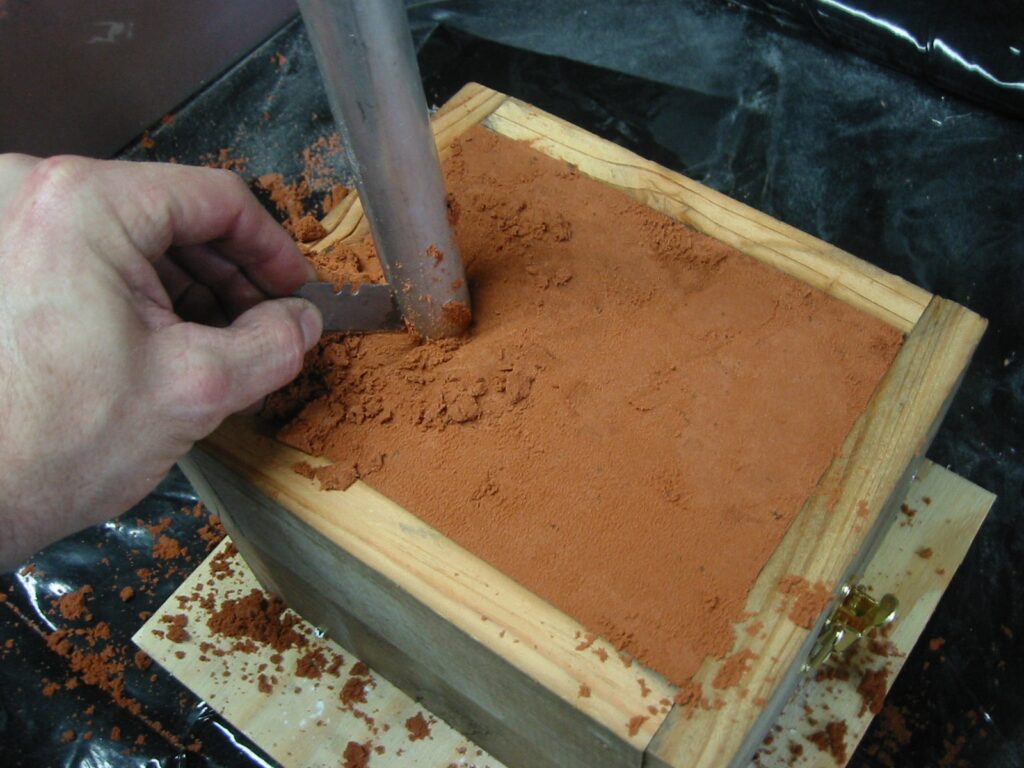Introduction
Sand casting is one of the oldest and most widely used metal casting processes. It involves pouring molten metal into a sand mold to form a desired shape. The quality of the final casting largely depends on the type of sand used, as different sands have unique properties that affect mold strength, permeability, and surface finish. This article explores various types of sand used in casting, their properties, advantages, and applications.
1. Requirements for Casting Sand
Before delving into specific types, it is essential to understand the key properties required for casting sand:
- Refractoriness: The ability to withstand high temperatures without melting or degrading.
- Permeability: Allows gases and steam to escape, preventing defects like gas porosity.
- Grain Shape and Size: Affects mold strength, surface finish, and compaction ability.
- Collapsibility: The ability of the sand mold to break away from the casting after solidification.
- Reusability: The ability to be recycled for multiple casting cycles.
2. Types of Sand Used in Casting
2.1 Silica Sand
Properties:
Silica sand (SiO₂) is the most common type used in casting due to its abundance, affordability, and high refractoriness. It has good permeability, strength, and reusability, making it suitable for general-purpose sand casting.
Advantages:
- High melting point (~1700°C) suitable for most metals.
- Good thermal stability and strength.
- Widely available and cost-effective.
Disadvantages:
- Silica sand expands at high temperatures, which can cause defects like veining.
- Inhalation of silica dust poses health hazards (silicosis).
Applications:
Used in ferrous (iron, steel) and non-ferrous (aluminum, brass) casting industries for making molds and cores.
2.2 Chromite Sand
Properties:
Chromite sand (FeCr₂O₄) is a high-density sand with excellent thermal conductivity and refractoriness. It has a low thermal expansion rate, reducing casting defects.
Advantages:
- High refractoriness (~1900°C) ideal for steel and superalloy casting.
- Excellent resistance to thermal expansion and cracking.
- Good chemical stability, preventing metal-sand reactions.
Disadvantages:
- More expensive than silica sand.
- Requires proper handling due to heavy weight.
Applications:
Commonly used for casting steel, stainless steel, and heavy-section components that require high thermal stability.
2.3 Zircon Sand
Properties:
Zircon sand (ZrSiO₄) has a very high refractoriness and low thermal expansion, making it suitable for precision casting applications. It also offers high density and excellent chemical stability.
Advantages:
- Extremely high melting point (~2500°C).
- Minimal thermal expansion, reducing defects.
- Good resistance to metal penetration and sand burn-on.
Disadvantages:
- Expensive and less available than silica sand.
- Heavy, requiring careful handling.
Applications:
Used in high-precision and high-temperature alloy casting, such as aerospace and turbine blade manufacturing.
2.4 Olivine Sand
Properties:
Olivine sand (Mg₂SiO₄–Fe₂SiO₄) is an alternative to silica sand that reduces health hazards related to silica dust exposure. It has good refractoriness and moderate thermal expansion.
Advantages:
- Safer than silica sand as it does not produce free silica dust.
- Good resistance to metal penetration and thermal cracking.
- Moderate thermal expansion reduces defects.
Disadvantages:
- Lower refractoriness than zircon and chromite sand.
- Limited availability compared to silica sand.
Applications:
Used in non-ferrous and steel casting where silica-free environments are required.
2.5 Resin-Coated Sand
Properties:
Resin-coated sand consists of silica sand coated with a thin layer of resin. The resin improves mold strength, reduces gas defects, and enhances dimensional accuracy.
Advantages:
- Produces high-precision castings with a smooth surface finish.
- Reduced gas defects due to controlled permeability.
- Improved collapsibility, making it easier to remove the mold.
Disadvantages:
- More expensive than natural sands.
- Requires careful handling and curing processes.
Applications:
Used in high-precision automotive and aerospace castings, especially for complex shapes requiring superior surface quality.
2.6 Ceramic Sand
Properties:
Ceramic sand is an engineered sand made from alumina-silicate materials. It has a spherical shape, high thermal stability, and excellent permeability.
Advantages:
- High refractoriness (>1800°C) and low thermal expansion.
- Excellent flowability and compaction properties.
- Good resistance to thermal shock and metal penetration.
Disadvantages:
- Expensive compared to natural sands.
- Requires specialized handling and reclamation techniques.
Applications:
Used in high-end foundry applications, such as investment casting and precision steel casting.
3. Comparison of Different Casting Sands
| Sand Type | Refractoriness (°C) | Thermal Expansion | Permeability | Surface Finish | Cost | Application |
|---|---|---|---|---|---|---|
| Silica Sand | ~1700 | High | Good | Moderate | Low | General casting |
| Chromite Sand | ~1900 | Low | Moderate | Good | High | Steel casting |
| Zircon Sand | ~2500 | Very Low | Moderate | Excellent | Very High | High-temperature alloys |
| Olivine Sand | ~1600 | Moderate | Good | Good | Medium | Silica-free casting |
| Resin-Coated Sand | ~1700 | Moderate | Controlled | Excellent | High | Precision casting |
| Ceramic Sand | >1800 | Very Low | Excellent | Excellent | Very High | Investment casting |
4. Conclusion
The selection of casting sand depends on factors such as the type of metal being cast, required surface finish, defect prevention, and cost.
- Silica sand is the most common and economical choice for general-purpose casting.
- Chromite sand is preferred for steel casting due to its high refractoriness and stability.
- Zircon sand is ideal for high-precision and high-temperature applications.
- Olivine sand provides a safer alternative to silica sand with moderate thermal expansion.
- Resin-coated sand and ceramic sand are used for complex and high-precision casting applications.
Understanding the properties and applications of different sand types helps foundries optimize casting quality, reduce defects, and improve production efficiency.

